|
Products
In Development
This page is
to give our customers a glimpse into the daily developments that go on at Wicked
Air Sportz.
Although
many products may be revealed here, we have no way of determining release dates
or features for these products, so please do not email us and ask questions
about what you see here. This page is being provided due to the many
requests from customers to see what we are working on.
ENFORCER(tm)
RELEASE DELAYED
U.S. and
World-Wide Patents Pending
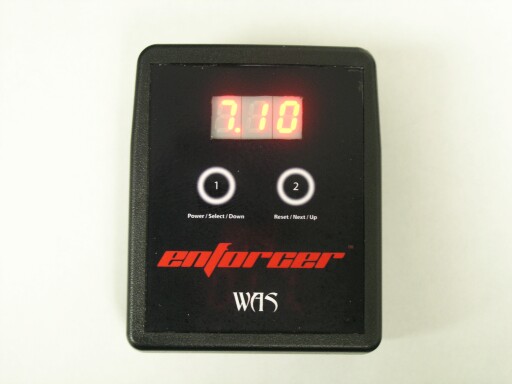 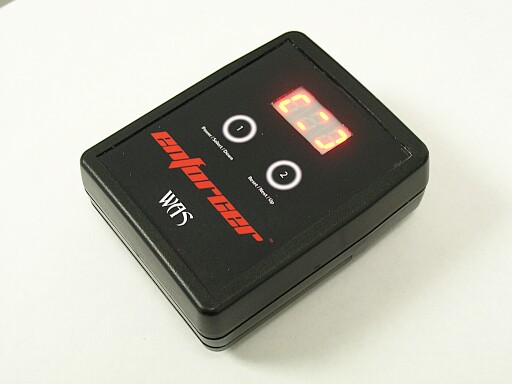
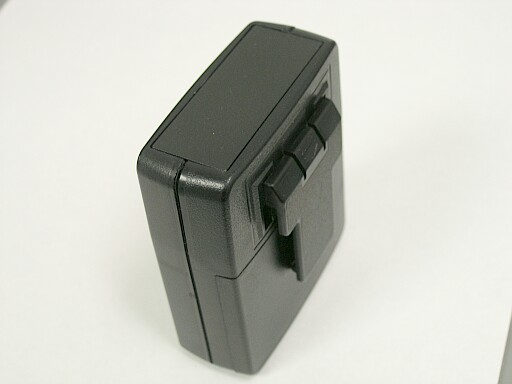 
Prototype Enforcer(tm), commercial unit will have a dark
display face making it easy to see in bright daylight
Click
HERE to see a video of the Enforcer(tm)
in action! WARNING! This is 20MB download!
An end
to cheating?
When the PSP
announced that "ramping" would be allowed, we were outraged. Our insurance
company refuses liability coverage for this mode of fire (along with anything
else that is not true semi-auto operation). We firmly believe that this
mode of fire is dangerous. Since the ramping was introduced, every single
PSP event has had players knocked unconscious due to having balls shot into a
players head at the same location repeatedly. This was the PSP's solution
to the ever-growing problem of cheating, and it has actually made the problem
worse as it is much easier to mask a cheating marker amongst every marker on the
field shooting virtually in full auto.
PACT timers
are used at PSP events to measure the rate of fire of markers, although they are
not used throughout game play. The refs using these devices openly admit
that they are cumbersome to use, and they are not used correctly. After
shooting a string of shots over the PACT timer, the ref is suppose to review
every single shot to shot time to see if it dips lower than the minimum
requirement. Almost every time, the ref just looks at the last shot to
shot time and makes a call based on that reading. Unfortunately, many of
our competitors (and you know who they are) have learned this and are taking
advantage of it by allowing a marker to shoot whatever rate of fire for the
first trigger pull while in ramping mode (which is a 3 shot burst). So the
first shots after the last 3 shot burst could be 20+ bps. When the trigger
is released and not repulled, the 3 shot burst finishes, showing the last shot
to shot time that is magically perfect! This is the level of cheating now
folks!
We developed
the first high profile electronics in this industry. Our hardware is fast
and our code is written in 100% pure hand optimized assembly code. You
simply can not get any faster than what we give you LEGALLY, period. We
have dropped several manufacturers and turned down a few pro teams who wanted
boards from us because we refuse to support cheating. We're tired of the
cheating. Enter the Enforcer(tm). Now, we have taken technology to
the next level by providing the tournament promoters, and players that want to
make sure their markers are legal, the means to know just how a marker shoots,
and in real time.
The
Enforcer(tm) is roughly the size of a hand held chrono with a convenient belt
clip. Unlike the bulky PACT Timer, the display is in easy to understand
BPS, not hundredths of a second. For those that need to see extreme
accuracy, the Enforcer(tm) can also show the time in milliseconds, with a 10
microsecond resolution. The accuracy of the Enforcer(tm) is far greater
than the PACT timer. Each unit has its accuracy calibrated to within +/-4
microseconds. The PACT Timer's resolution is full one millisecond
increments, which requires rounding up or down (perhaps as much a nearly one
full millisecond) from the actual time. We believe that the limited
resolution of this device could have
likely resulted in incorrect penalties this year. Although the PACT Timers
are excellent products, they are just not accurate
enough for the limits imposed by the PSP and other tournament promoters.
PACT timers are great units for shooters of real ammunition and offers
unparalleled accuracy for velocity, but the shot to shot time resolution is not
sufficient for paintball, where accuracy can mean the difference between winning
and losing. If your marker resulted in a penalty for shooting 1ms under
the limit, you may very well have received a penalty for no reason other than
the limited resolution of a device. If your marker showed 2ms or more below the
limit, then your marker was definitely the cause and you "deserved" the penalty
(more on that later).
Real
time checking
Unlike the
PACT timer, a ref can hold the Enforcer(tm) 1" to several feet away from a
marker and measure the rate of fire right on the field, just as chrono refs use
a hand held chrono to measure velocity during game play.
Typical WAS features
It seems
that when we set out to design something, it always turns out to be better than
expected. Such is the case with the Enforcer(tm). This device was
originally designed just to determine the rate of fire in BPS. This device
not only can do that, but it can store 2-32 shots that can be analyzed and
replayed. The analyzation can be either a rate of fire cap limit (PSP
mode), or shot to shot analyzation (NPPL mode) to determine if a human is
pulling the trigger based on spacing between shots and other unique signatures,
including trigger bounce! A programmable game timer is also built in and
runs asynchronous to the analyzation. A ref can switch back and forth
between the game time and checking markers. Powered by a single 9 volt
battery, with a typical lifespan of a complete paintball season, the
Enforcer(tm) has 10 different programmable features:
-
Range.
Adjustable from 1" to several feet. Short range is recommended during game
play.
-
Timing Mode.
PSP or NPPL.
-
Display
data. Either in BPS or milliseconds.
-
Number of
shots to record and analyze (2-32).
-
BPS Warning.
Maximum BPS rate allowed before causing "OL" (over limit) to be shown and flash
display during replay.
-
Display
brightness control (10 levels).
-
Display
flip. Allows display to be inverted while in timer mode so a player can
simply look down at the display when clipped on on a belt.
-
Timer
Minutes (0-99). Game timer minutes.
-
Timer
Seconds (0-59). Game timer seconds.
-
Timer
warning (0-59). Number of seconds remaining before flashing the display,
signifying the timer (game) is about to expire.
Other
features include a powerful 8MHz CPU (compared to 4MHz typical for marker
electronics), automatic power off after 30 minutes, belt clip, tough washable
membrane overlay, and our standard lifetime warranty.
Marker Electronics
Competitors choosing low-end CPUs
It is not
uncommon to read blurbs (usually from our competitors) about the accuracy of a
chosen CPU being 1% of the CPU's internal clock rate. These CPUs have
built-in clocks, typically running at 4MHz. 1% of 4 million "ticks" per
second is 40,000 microseconds. This means that potentially, a CPU's clock
could be off as much as 40,000 microseconds (which is 40 milliseconds) every
second. In simpler terms, it means that the CPU could be doing everything
right, and the clock is running too fast and so the time between shots would be
too quick. At 10bps, the CPU could actually be off by as much as 4ms!
Technically, 1/1000th of a millisecond over the limit is a penalty!
Imagine have 40 times the possibility of this occurring! With exception of
our Tippmann board, our marker electronics use more expensive CPUs, having
external precision clocks with a typical accuracy of 4 ppm (parts per million),
resulting in a +/- 16 microsecond error range. Our DM4/DM5 chip, Proto
Upgrade, and A5 electronics are each hand calibrated to correct any timing
inaccuracy. No whining here, just results. The penalty that you
"deserved" might be courtesy of a competitor more concerned about making
a profit than the reliability of their products... or they simply don't care if
people cheat... take your pick.
End to
an age old argument!
Everyone
thinks they shoot fast. With the Enforcer(tm), you can now
determine with perfect accuracy, who the fastest shooter is on your squad!
No more arguing, it's time to put up or shut up!
Gunsmith's best friend!
For those
that want to squeeze every bit of performance out of their marker, this is the
tool to have! No more guessing about what happens to your rate of fire
when you change your dwell, debounce, BIP Delay(tm), etc. Now you can
determine the best setup for your marker.
Affordable as usual
At roughly
1/3rd the cost of the same PACT
MKIV
timer used by the PSP,
Wicked Air Sportz once again comes through for the player. Although this
might be the single most important accessory that you may need, we are not going
to soak you for it. Suggested retail $59.95.
Equalizer
for Halo-B or Reloader
RELEASE DELAYED
U.S. and
World-Wide Patents Pending
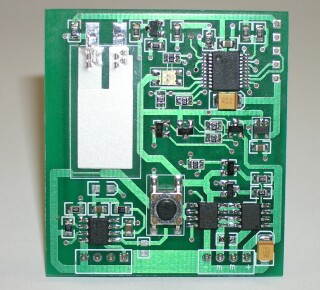
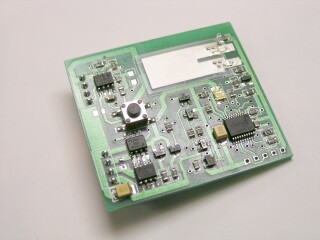
This is a
replacement board for the Odyssey Halo-B and Empire Reloader hoppers. One
board will work with either type of hopper.
This product
was started shortly before the belt driven Halo was introduced. It has been in
active development for nearly 2 years, with real-world testing over the
last 6 months including a complete re-design to add support for the Reloader.
Motor
control circuitry with forward/reverse, speed, position, & torque feedback, piezoelectric
resonance sensor, anti-jam logic, and numerous other patent filings were due to
the creation of this product.
When we set
out to design new hardware for the Halo we had several goals in mind:
Make
it feed as fast as possible
People like
to throw out big numbers for marketing reasons. We like to provide the
facts. The facts are simple, too much pressure on the stack of balls with
too brittle of paint means you have broken balls, and then a VERY slow hopper!
How fast can the Halo go? Well, in practical applications the Halo will
exceed what any marker can shoot (today). The Equalizer board can spin the
motor roughly 50 times faster than gravity will allow the balls to become caught
in the drive cone. So, it is fair to say that the Equalizer board could
drive the motor faster than the Halo mechanics and gravity will allow for proper
feeding. In real world testing, anything over roughly 40 balls per second
passing through the drive cone assembly will result in balls being missed or
crushed by the drive cone fins. The Equalizer's motor control circuitry
and logic is extremely easy on paint and spins the motor only as fast as needed.
Maintaining extreme pressure on the ball stack is not necessary and only results
in broken drive cones, sheared drive cone fins, and burned out motors. The
Equalizer board's microprocessor is the latest state-of-the-art version with a
code execution speed of 2 MIPS (million of instructions per second), and having
an operating frequency of 8Mhz. This is twice as fast as any Equalizer
board we make for markers!
Fixing
the problem causing paint to break in the breech when the hopper is nearly empty
This problem
requires the ability to determine the exact motor speed and position. By
knowing the exact motor speed, motor position, and the drive ratio (motor
pulley:drive cone pulley), you can determine the exact position of the drive
cone. The electronics use EMF feedback to determine the exact motor
position. You don't need to have a sensor on the drive cone assembly (like
the patent recently filed by Odyssey would suggest). If you know the drive
cone position and monitor the motor's torque and use the eye system (if it
exists) you can deliberately slow down the hopper when the balls start
"bobbling" in the hopper. The end result is that no matter how fast you
are shooting, if the hopper runs out of paint you will not get any breaks as a
result of the Halo. This approach is so unique that we have applied for
several patents pertaining to this.
Reduce
jamming and fix
jamming problems that occur
How many
times have you sat in a bunker with the Halo blinking red/green? It's
jammed and now you have to fight with manually fixing the jam using your finger
or the rip drive (if you have one) and turn the hopper off and back on.
5-10 seconds have easily gone by with a marker that is down. In X-ball,
you probably just got bunkered!
The
Equalizer's patent-pending motor control hardware and logic not only reduces the
chance of jam occurring in the first place, but also has the ability to know
when a jam has occurred! If a jam does occur, the motor is reversed to
clear the jam and then the drive cone is wound back to the same position without
putting excessive pressure on the stack of balls! This anti-jam logic
detects a jam and clears it in as little as 1/4 of a second!
Detecting
any type of paint
Everyone
knows that the Halo has a problem seeing dark colored and transparent paintballs.
The Equalizer board's 10 bit ADC and programmable eye power level allows you to
use any type of paint. The circuitry is so sensitive that it can determine
the amount of time between balls falling into the breech, even between two balls
falling together.
Reduce
battery consumption
Unlike the
stock board, the Equalizer is OFF when it is turned off and does not drain the
batteries just sitting in your gear bag. Although power consumption is
relatively low with stock board turned "off", you will find after a month of
sitting that your Halo-B's batteries are very depleted.
The stock
board uses old microprocessor technology and motor control logic to control the
motor speed. The motor frequency is 100Hz, which means that the motor is
turned on and off 100 times per second. Although this might sound fast,
it's not! The efficiency suffers greatly and you do not have much
resolution for controlling the motor speed. The efficiency equates to how
much battery life you get. The Equalizer board's engineers came from the
R/C market, having designed numerous products for the R/C industry including
electronic speed controls used for R/C cars and planes. The Equalizer
board's
PWM motor frequency is 20,000Hz! The efficiency is enormously better than the
stock board, giving you a battery life of several times of what you get with the
stock board! The Equalizer for the Halo might be the only product in
paintball that actually pays for itself in battery savings!
Extend
motor life
By using a
high frequency PWM motor control pulse, the motor brushes are not subjected to
high current startups like with the stock board. A lower current startup
reduces brush arching, which pits the motor's commutator. Lower current startups
also reduce power consumption, saving battery life. A high frequency pulse
allows you to drop the startup current without sacrificing the needed initial
startup motor speed.
Extend
drive cone life
By having
complete motor control feedback, there is no need to wind the drive cone up for
some arbitrary period of time. It is the constant winding (without
stopping before excessive pressure develops) that causes the drive cone pin and
fins to break off.
Support for new high-tech batteries
With the
recent release of high power lithium-polymer (LiPo) batteries, electronics can
now be powered by light weight and long lasting power solutions. A three
cell pack (4.2v peak each cell) generates roughly 12.6 volts and is ideal for
this application, but this voltage is too much for the stock board. Many
people have been doing a mod to their Halo that uses two 9v batteries in
series (18 volts) and the result is a lot of burned up boards! Other
companies are also offering Nicad and Nimh battery packs with higher output
voltages also damaging boards as well as the motors. The Equalizer can
handle up to 35 volts (and up to 20amps of current), making it an ideal
candidate for a LiPo conversion. We will be offering a LiPo battery pack
when the Equalizer board is released. The battery will last an entire
tournament week (a dozen or more cases of paint shot) on a single charge with
the Equalizer board!
Dual
hopper support (Halo-B & Reloader)
The Halo-B
has an optical ball sensor ("eye") system and the Reloader uses sound
activation. The Equalizer board supports the eye system, but instead of
using a microphone to "hear" the sound of the marker firing (like the Reloader
does) we developed a custom piezo-electric sensor that we call the "EVS(tm)".
The EVS(tm) generates a voltage proportional to movement of the sensor.
Sound itself will not trigger the sensor, so a nearby marker can not trigger the
hopper. As an added bonus, if the eye system fails or is deliberately
disabled, the EVS(tm) will take over and allow you to keep feeding.
Realistically, an optical sensor system is a better method as the computer can
correlate the required motor speed with the rate at which the balls are being
put into the breech, however, knowing how fast the motor is spinning, its
rotational position, and how many rotations are necessary to load a single ball,
the computer can calculate the feed rate with a fairly high degree of accuracy.
Make
it adjustable
Just like
every Equalizer board, we give the user the ability to adjust settings to suit
their needs. The stock settings will always outperform what a marker is
capable of shooting (today), but we think ahead and give the users what they
want... tweakability! The programming is similar to all other Equalizer
boards, using LED flashes and button presses to check and change settings.
Keep
it affordable
It doesn't
make much sense to spend $100+ for a hopper and buy an upgrade board that is
nearly the same price as the hopper! The Equalizer board will
retail for less than $50.
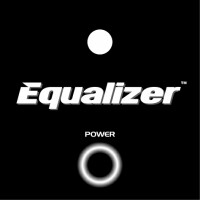
The Equalizer board will also come with a
new back plate sticker.
µEQ(tm)
micro-Equalizer
RELEASE DELAYED
U.S. and
World-Wide Patents Pending
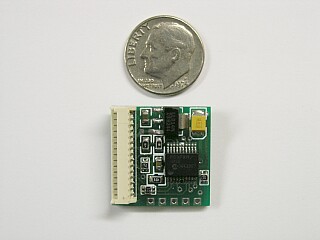 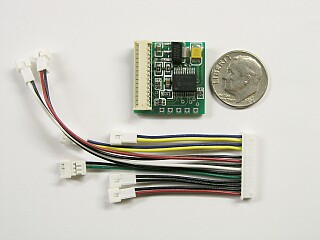
Left - µEQ shown with a U.S. dime (production model will be
75% smaller!), Right - µEQ with AKA Viking header
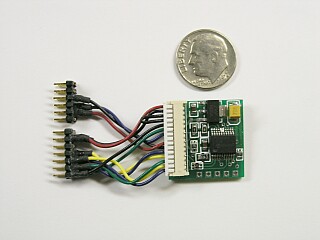 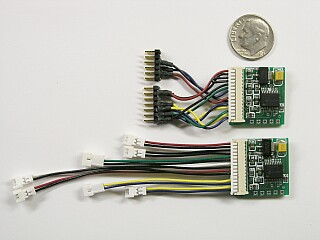
Left - µEQ shown with Intimidator header, Right - µEQ with
AKA Viking & Intimidator headers
While the
competition is still trying to play catch-up with our technology, and are busy
copying things that we invented (trigger programming, Debounce(tm), Forced Eye
Modes, etc.) we have been taking hardware to the next level.
The µEQ(tm)
[micro-Equalizer] is the latest hardware that we are close to releasing.
This hardware features a CPU that is twice as fast as anything we previously
have used, offering a hardware level trigger scan rate of an unprecedented 2
million times per second! The pictures shown above are of an early
prototype that is nearly twice the size as our current model!
This new
board is a universal board. Simple header plugs for whatever application
you might need (DM4, Intimidator, Viking, Shocker, etc.) will be readily
available. By using a single board for all markers, we can keep the cost
of the board down due to the large volume. The various header plugs will
be priced based on their complexity. We hope to keep the board itself in
the sub-$50 range!
Remote
updating will be possible using our new patent-pending communication interface.
This interface offers a simple wireless solution for updating boards, obtaining
information, and tweaking settings. A simple plug-on adapter for the
Equalink will be available. No more opening the grip.
Of course,
all of the normal features that you come to expect from Equalizer boards will be
part of the standard programming.
....more products coming soon!
|

